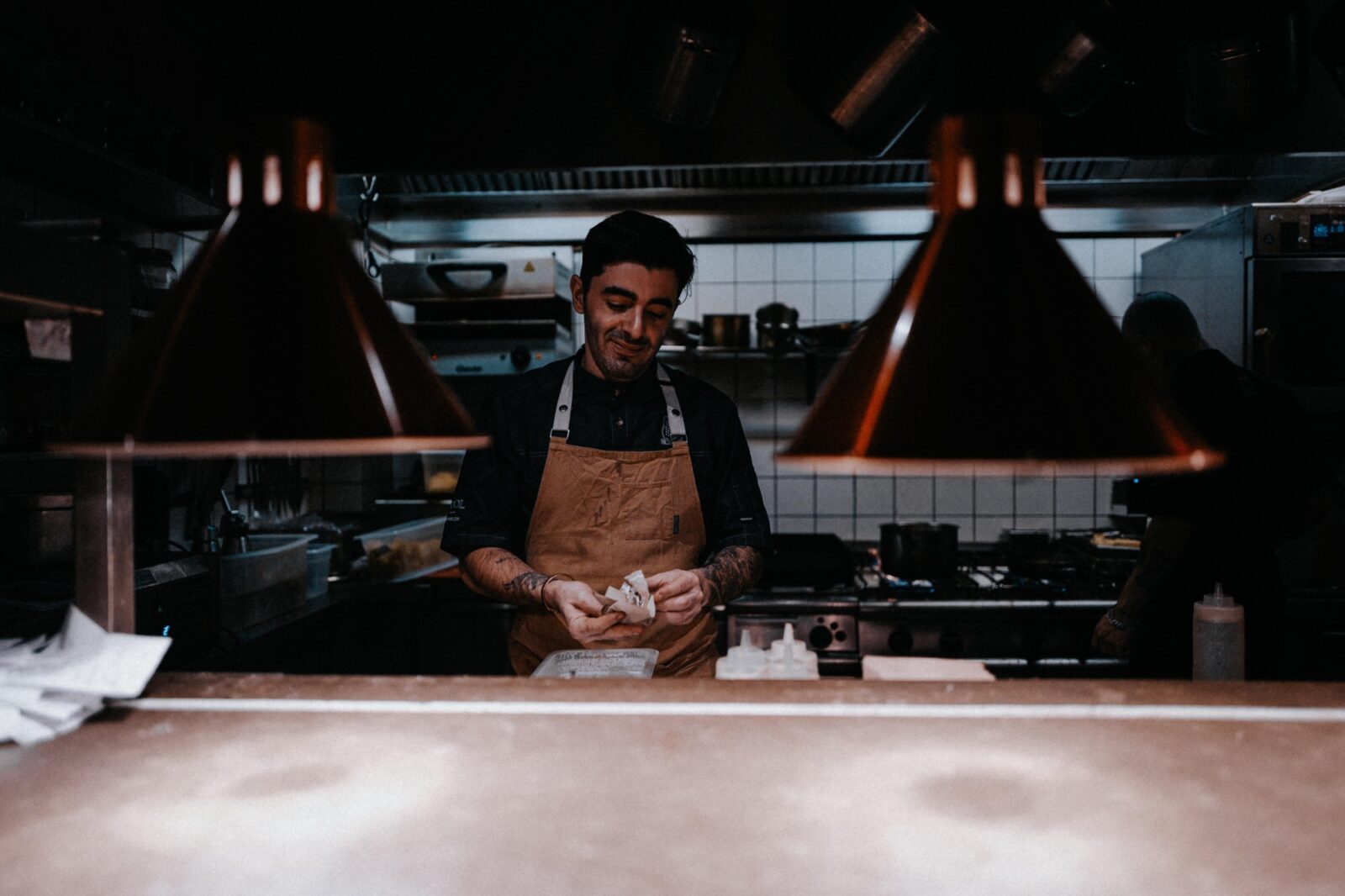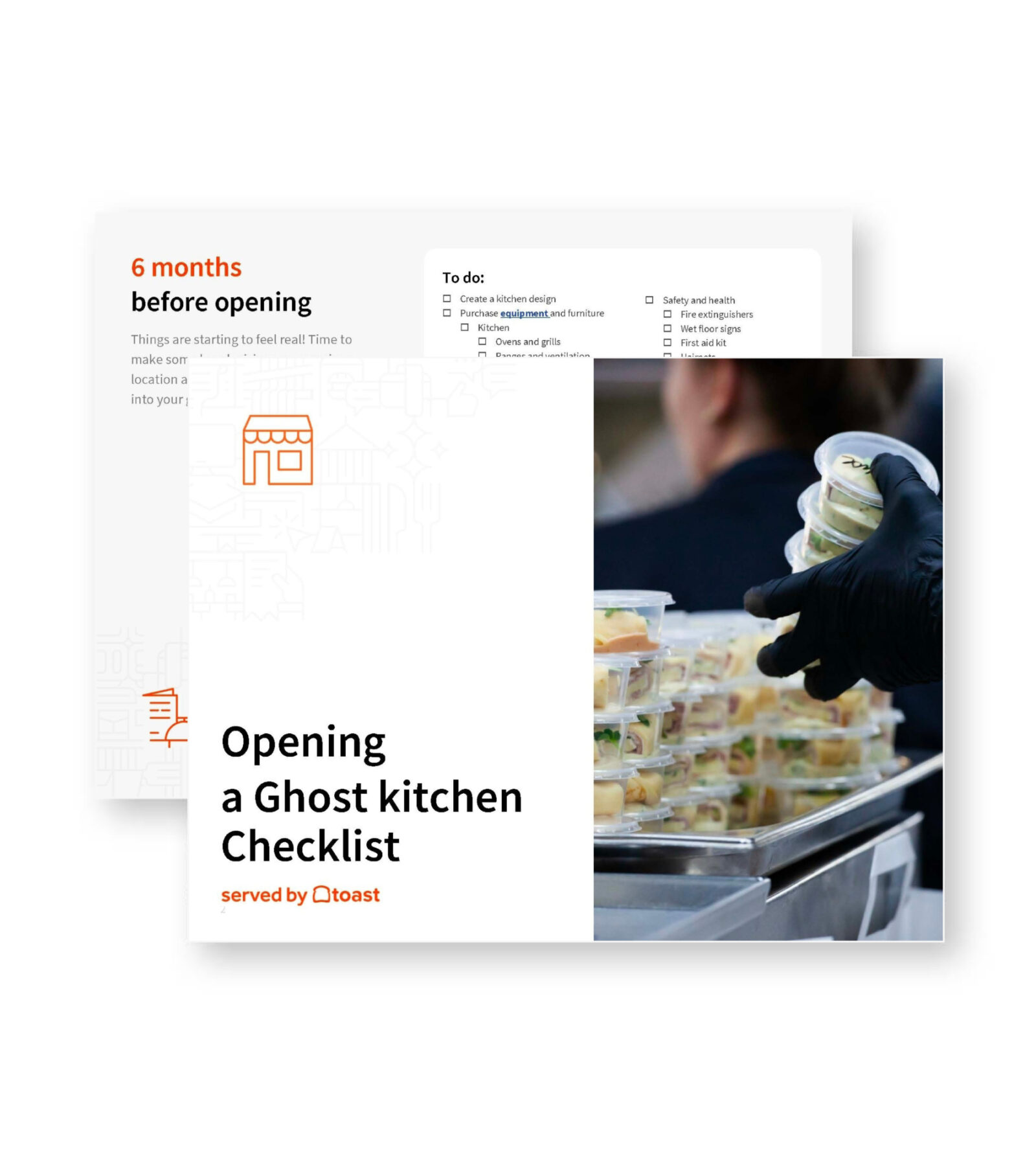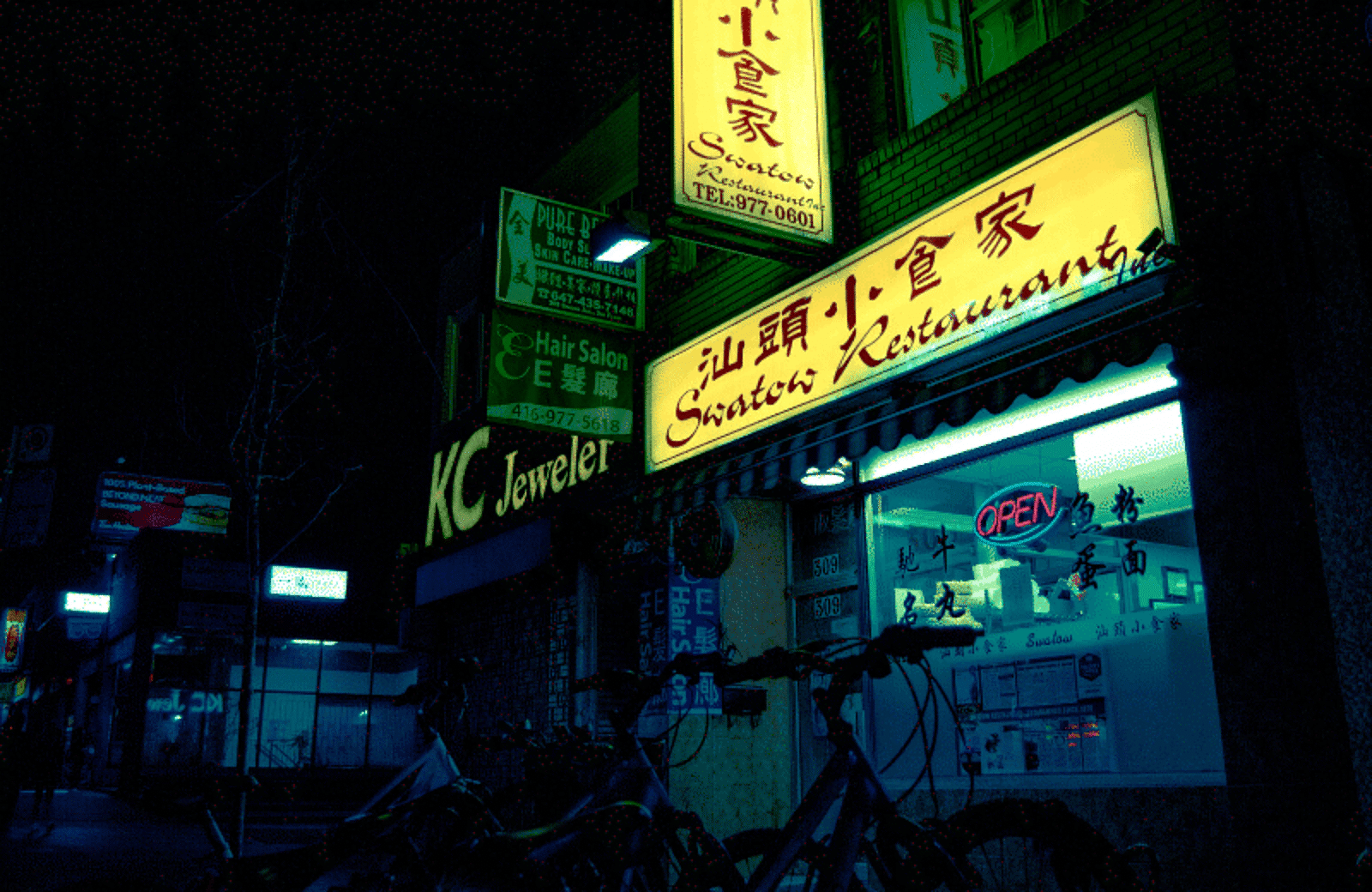
How to Open a Ghost Kitchen: Starting a Ghost Kitchen Business Steps
Thinking of opening a ghost kitchen? Here’s a checklist and the average cost to start a ghost kitchen.
Tyler MartinezAuthor


Opening a Ghost Kitchen Checklist
So many things go into opening a ghost kitchen. With this free PDF checklist, you'll set your new business up for success.
Get free downloadHow to Start a Ghost Kitchen
Creative restaurateurs are taking advantage of demand for convenience and delivery in the food service industry. Ghost kitchens are delivery-only restaurants that focus on bringing restaurant-quality experiences to customers’ homes.
There are many different ways to get into the ghost kitchen game, but the steps of opening a ghost kitchen and a traditional restaurant are roughly the same. This detailed guide is designed to jumpstart your ghost kitchen research.
Ghost Kitchen Checklist:
Choose a format and concept
Write a business plan and/or develop a brand
Choose a location
Secure funding
Obtain licenses
Develop a delivery strategy
Procure equipment and technology
Consider marketing and advertising
Find a reliable food supplier
Hire and train staff
Virtual restaurants aren’t the VR eateries you’re thinking of, where you can be immersed in a digital world while eating dinner. That doesn’t mean they aren’t just as cool and a great tool for your restaurant. Virtual restaurants might help you make the most of your kitchen’s take-out window.
We're providing everything you need to know about delivery-focused virtual restaurant brands and concepts with this detailed guide.
Choose a Ghost Restaurant Format
Are you looking to expand your restaurant’s brand with a ghost kitchen franchise? Or do you have some extra retail space for a delivery-only kitchen? Ghost kitchen business models provide solutions for restaurateurs who don’t want the commitment of opening a full brick-and-mortar restaurant.
Shared kitchens are commercial kitchens that lease access to ghost kitchens, catering businesses, and other flexible food service businesses.
Dark kitchens, sometimes called pod kitchens, can turn any retail space into a kitchen almost overnight. Some ghost kitchen franchises will help investors set up a dark kitchen to expand their operations.
Ghost kitchen brands and virtual brands can operate from pretty much any kitchen – so if you have a brilliant brand idea, starting a ghost kitchen in a shared kitchen space or a dark kitchen might be right for you.
Business Plan
Start by building a ghost kitchen business plan that covers all the important details of your restaurant. Even with this futuristic business model, ghost kitchens still use a business plan to guide operations.
A business plan is a living document that’s just as useful to the business owner as it is to investors, management, and the overall success of the business. Writing your business plan should help you to choose where to focus your experience and time toward making your ghost kitchen successful.
Include information about your brand, finances, staffing, labor, and menus in your ghost kitchen business plans – everything investors and banks will want to see when deciding whether to support your business.
Location
The location of your ghost kitchen determines which customers have access to your restaurant. Many ghost kitchens don’t operate storefronts and won’t attract customers from outside a limited delivery range.
Unlike traditional restaurants, ghost kitchens don’t have to work to attract customers from all around the area to their restaurants. The delivery services that ghost kitchens partner with offer different delivery ranges.
Alternatively, you could hire and manage your own delivery drivers to determine your own delivery range. Either way, the location of your ghost kitchen is an important factor in deciding what menu and brand will succeed in the area.
Licenses and Permits
Ghost kitchens have to follow all the same regulations and maintain many of the same licenses as restaurants. The requirements in each city, county, and state are different, so make yourself familiar with the laws in your area regarding food service and delivery.
The following permits and licenses are likely required to legally operate a ghost kitchen:
Business License
Food service license
Employee health permit
Seller’s Permit
Zoning permit
Collect Taxes, DBA, and EIN Information For Your Ghost Kitchen
Part of the permit process includes setting your restaurant up to pay employees and income taxes. Start this research early so that when you’re ready to open, you’re not stuck behind any deadlines. Handling taxes improperly can lead to hefty fines.
File your ghost kitchen‘s unique trade name with a DBA (Doing Business As), and complete the necessary tax paperwork with a professional. Your business will need an EIN (Employer Identification Number) to file payroll tax for staff members.
Each state and county makes its own tax codes, so it’s important to research all the licenses and permits necessary to operate a delivery-only restaurant in your area.
Calculate Finances, Sales Forecasts, and Operating Expenses
As part of your ghost kitchen’s business plans, you’ll compile financial projections to plan sales and daily operating expenses. Get as detailed an idea of the costs of your business as possible so that you can predict future earnings.
How Much Does it Cost to Run a Ghost Kitchen?
The costs of running a ghost kitchen are similar to other restaurants. We’ve estimated the operating costs of a single, delivery-only ghost kitchen location to give you an idea of the finances.
Operating Costs $13,000 - $65,000
Commercial Kitchen - $1,500/month
Insurance - $500-$8,000/month
Utilities - $800-$1,000/month
Marketing - $500- $5,000 (3-6%) of sales
Food Costs $5,000-$25,000 (30-35% of sales)
Labor $1,950-$19,500 (15-30% of sales)
Your business model will determine the specifics of the rent or mortgage on the kitchen, the cost of utilities in your area, and your marketing budget.
Funding and Loans
Many restaurants acquire the space and equipment they need to get started with business loans and lines of credit. It’s important to factor loan repayment into the costs of your restaurant. Contingency funds in the form of a loan or savings might be necessary to cover unforeseen expenses in your first year of operations.
Branding and Marketing your Ghost Kitchen
If you’re used to the traditional restaurant industry, marketing your ghost kitchen will be a little different. Revisit your business plan as you create a marketing strategy for your ghost kitchen business.
Naturally, what product you’re selling determines how you sell it. Marketing for ghost kitchen brands is different from marketing a shared kitchen space.
Luckily, most marketing happens online, so building a website for your ghost kitchen business is a great place to start. A website acts almost like the lobby of a traditional restaurant – it's the primary place where your customers will go to interact with your brand.
But it’s certainly not the only place – aside from a website, it’s important to be active across the social media platforms that are popular with your customers. And third-party delivery services can help you reach customers with their app marketplaces.
Ghost Kitchen Menus
Ghost kitchens can serve almost any kind of cuisine — the ghost kitchen wave is focused on elevating the delivery experience to meet the growing demand for excellent food with ultimate convenience.
Brands like WowBao—a potstickers and dumplings franchise that’s expanded using ghost kitchens—create focused, restaurant-quality menus that can be prepared with simple equipment.
Food Supply and Inventory
Once you create a menu, it’s important to do the proper research on suppliers and food costs so that you can keep your ghost kitchen stocked. Deciding on a supplier can be difficult, but there are likely a number of wholesale food suppliers in your area where you can shop.
Contact other kitchens in the area to ask about their suppliers if you’re having trouble getting leads. Be sure to create a good relationship with your supplier – if you don’t have the ingredients or products you need, you can’t operate your business. Partner with a reliable supplier that you can trust.
Your restaurant’s management software helps you to keep track of supplies so you can calculate prime costs easily and know exactly when to reorder. Keep track of labor and employee pay with restaurant accounting software.
Develop a Distribution Strategy
Since ghost kitchens don’t offer table service and most don’t even operate a pickup window, plan for how the ghost kitchen will interface with customers. Some ghost kitchens still offer guest pickup, but most ghost kitchens are delivery-only.
Then, decide which apps, marketplaces, and delivery solutions to partner with. Delivery solutions that manage logistics will expose more customers to your brand. But third-party delivery apps can eat into your revenue. Some third-party apps charge as much as 30%, while others, like Toast TakeOut, don’t pass responsibility for any of the delivery fees onto the restaurant.
Ghost kitchens also hire and manage their own delivery drivers, and some third-party app marketplaces will let you fulfill orders with your staff. Choosing not to advertise on a third-party app can have consequences though, since they’re how many people discover ghost kitchens.
Equipment and Point of Sale
With a ghost kitchen, your customer’s smartphone or computer is their restaurant point of sale. Customers interface with ghost kitchens entirely through delivery apps and websites, which is part of the reason ghost kitchens are trending.
Ghost kitchens that operate from shared kitchens or invest in a dark kitchen have equipment built in, but some businesses will have to finance, rent, or purchase all the equipment needed to produce the restaurant’s menu.
Team and Management
Just because you’re running a ghost kitchen doesn’t mean your restaurant can operate with a skeleton crew.
Jokes aside, hiring and managing great kitchen staff for your ghost kitchen requires the same compassion and creativity as a traditional restaurant – and perhaps more. Some line cooks and managers won’t know what to expect when entering a ghost kitchen, so your training programs will have to be top-notch.
You’ll have to work to convince top talent that your ghost kitchen is an accessible and sustainable workplace. I’ve talked to a lot of industry professionals who aren’t ready to take the risk on a ghost kitchen.
Be patient with your staff as you all navigate the spooky waters of these new opportunities!
Is this article helpful?
DISCLAIMER: This information is provided for general informational purposes only, and publication does not constitute an endorsement. Toast does not warrant the accuracy or completeness of any information, text, graphics, links, or other items contained within this content. Toast does not guarantee you will achieve any specific results if you follow any advice herein. It may be advisable for you to consult with a professional such as a lawyer, accountant, or business advisor for advice specific to your situation.
Read More
Subscribe to On the Line
Sign up to get industry intel, advice, tools, and honest takes from real people tackling their restaurants’ greatest challenges.


